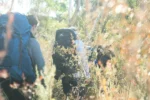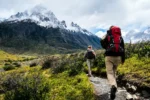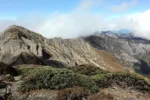What types of hiking trails are there?
This post may contain affiliate links. This means that we may receive a small commission from purchases through those links. Read more in our affiliate disclosure.
Think every hiking trail is the same? Think again—prepare to be astounded by the sheer variety!
Understanding the types of hiking trails and their maintenance levels ensures a safer and more enjoyable experience. Trails vary from well-maintained paths to rugged, unmaintained routes. Diverse hiking terrains like rocky trails, scree, boulder fields, and more challenge different skills and offer unique sceneries. Exploring the types of hiking such as day hiking, backpacking, thru-hiking, and urban hiking helps match your adventure style to your preferences and available time.
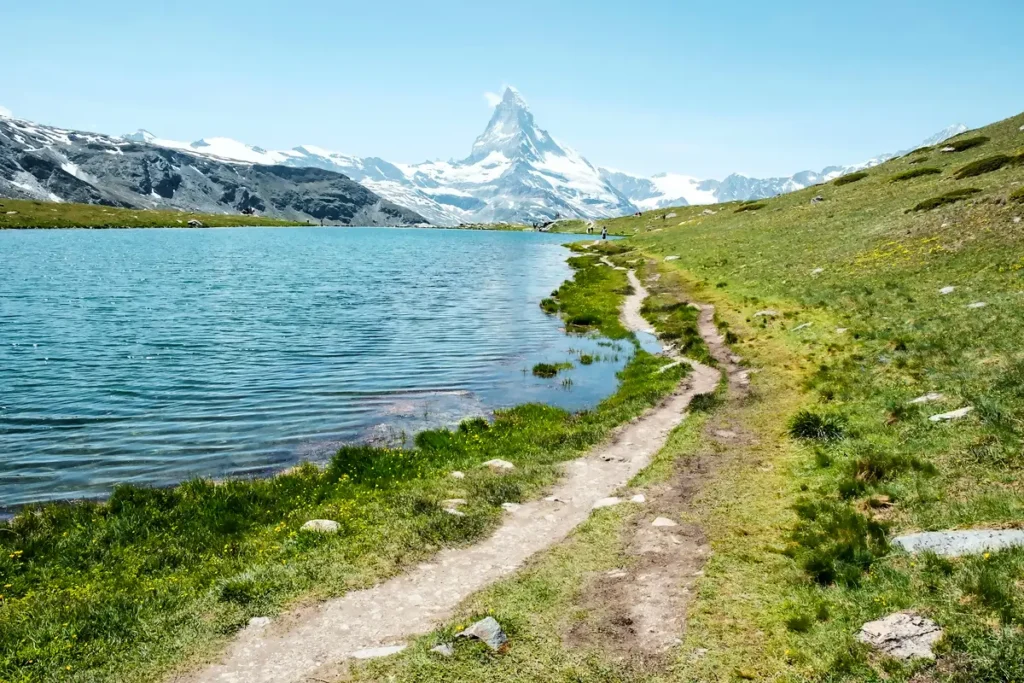
- Introduction
- Types of Hiking Trails By Maintenance Level
- Maintained Trails
- Informal and Unmaintained Trails
- Abandoned Trails
- User-Built (Bootleg) Trails
- Closed and Decommissioned Trails
- Types of Hiking Trails By Use
- Access Trails
- Backcountry Trails
- Connecting or Side Trails
- Destination Trails
- Directional Use Trails
- Feeder Trails
- Extended Trails
- Hiker-Biker Trails
- Hiking Trails
- Interpretive Trails (Nature Trails)
- Loop Trails
- Multiple-Use (Multi-Use) Trails
- Out-and-Back Trails
- Rail-Trails
- Recreation Trails
- Single-Track Trails
- Single-Use Trails
- Spur Trails
- Thru-Hiking Trails
- Trail Terrain Types
- Types of Hiking
- Final Thoughts
Types of Hiking Trails By Maintenance Level
Maintained Trails
Maintained trails, sanctioned by land managers and regularly upkept, are designed for safety and environmental protection. For example, Glacier Basin Trail at Mount Rainier offers clear paths and obvious signs. Trails like Fisher Lake in the Alpine Lakes Wilderness may be rougher but are still marked and reachable.
Social Trails
Within maintained areas, social trails—tiny, unmarked paths—lead to water, firewood, or toilets. For instance, at Snow Lake in the Alpine Lakes Wilderness, a little path leads directly to the toilet. These trails lack markers but are discernible due to continuous use.
Informal and Unmaintained Trails
Informal and unmaintained trails offer a more rugged experience. While still part of the official trail system, they may not have recent maintenance, requiring navigation around branches or overgrown bushes.
Boot Paths, Way Trails, and Scramble Paths
These include boot paths, way trails, and scramble paths, formed from repeated use by hikers or livestock. They often lead to remote peaks, offering solitude and a wilderness experience.
Abandoned Trails
Abandoned trails, once part of the trail system, no longer receive maintenance and can be difficult to follow. Leroy High Route in Glacier Peak Wilderness is an example, requiring a strong sense of direction and love for trailblazing.
User-Built (Bootleg) Trails
User-built, or bootleg, trails are unauthorized paths created by hikers. These can harm the environment and pose serious safety risks. It’s best to avoid them and stick to sanctioned paths.
Closed and Decommissioned Trails
Closed and decommissioned trails are areas shut down by authorities like the Forest Service. These trails pose significant hazards and are off-limits to protect fragile ecosystems. Respect closures for safety and environmental reasons.
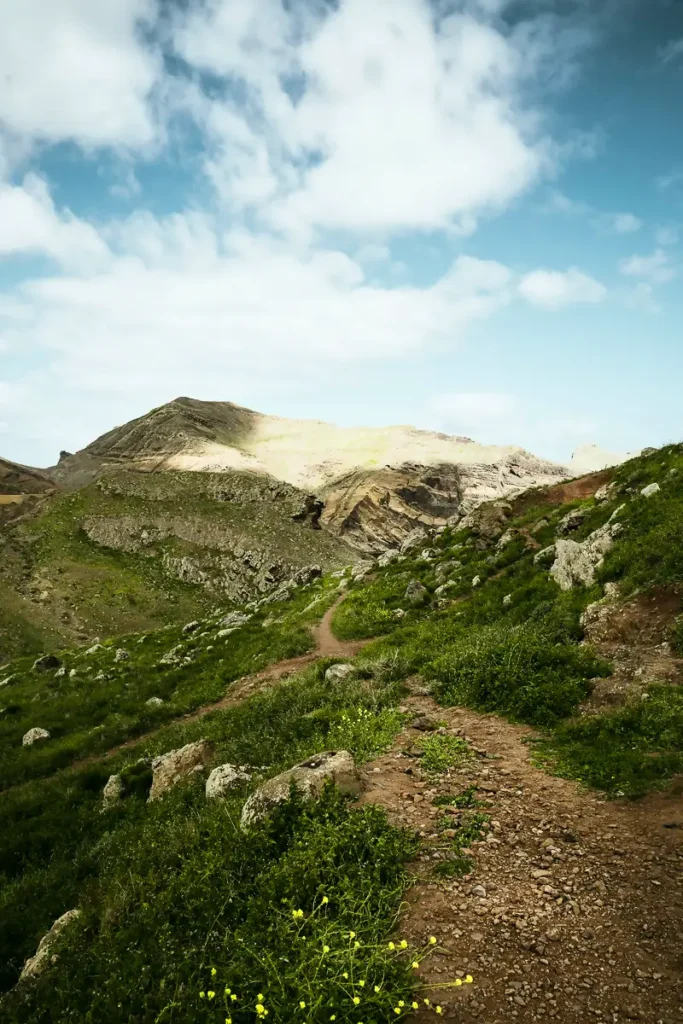
Types of Hiking Trails By Use
Access Trails
Access trails connect the main trail to a town, road, or another trail system, serving as the gateway from civilization to the wild.
Backcountry Trails
Backcountry trails lead into untouched, primitive areas, offering raw and wild experiences where self-sufficiency is key.
Connecting or Side Trails
Connecting or side trails offer detours or extra mileage, linking major trails and providing additional access points and scenic routes.
Destination Trails
Destination trails lead from the trailhead to a final point, like a viewpoint or waterfall, and then back. They provide a focused adventure with a rewarding endpoint.
Directional Use Trails
Directional use trails ensure one-way traffic, reducing congestion and enhancing the hiking experience.
Feeder Trails
Feeder trails connect facilities like campgrounds or neighborhoods to the main trail, making amenities accessible from the primary route.
Extended Trails
Extended trails stretch over 100 miles, offering days or weeks of exploration. They test your endurance and spirit.
Hiker-Biker Trails
Hiker-biker trails are urban, paved paths shared by pedestrians and bicyclists, perfect for mixed-use and quick nature fixes for city dwellers.
Hiking Trails
Primarily built for hiking, long-distance trails offer miles of uninterrupted communion with nature.
Interpretive Trails (Nature Trails)
Interpretive or nature trails feature informative signs or guides about the area’s fauna, flora, and history, enhancing your understanding of the environment.
Loop Trails
Loop trails form closed circuits, allowing you to explore new sights without backtracking.
Multiple-Use (Multi-Use) Trails
Multi-use trails accommodate hikers, mountain bikers, and equestrians, fostering a sense of community.
Out-and-Back Trails
Out-and-back trails lead to a destination and compel you to retrace your route back to the trailhead, perfect for focused hikes.
Rail-Trails
Rail-trails, transformed from inactive train corridors, serve as public paths for biking, walking, and more, blending history with recreation.
Recreation Trails
Designed for fun and relaxed hiking, recreation trails offer a good time indulging in nature’s beauty.
Single-Track Trails
Single-track trails are narrow pathways just wide enough for one hiker at a time, offering serene hikes with occasional yielding for fellow adventurers.
Single-Use Trails
Single-use trails cater to one activity like hiking, ensuring focused experiences with like-minded enthusiasts.
Spur Trails
Spur trails branch off primary trails leading to points of interest like viewpoints or campsites, offering short detours with rewarding sights.
Thru-Hiking Trails
Long-distance trails like the Appalachian or Pacific Crest are thru-hiker favorites, taking weeks or months to complete and demanding dedication.
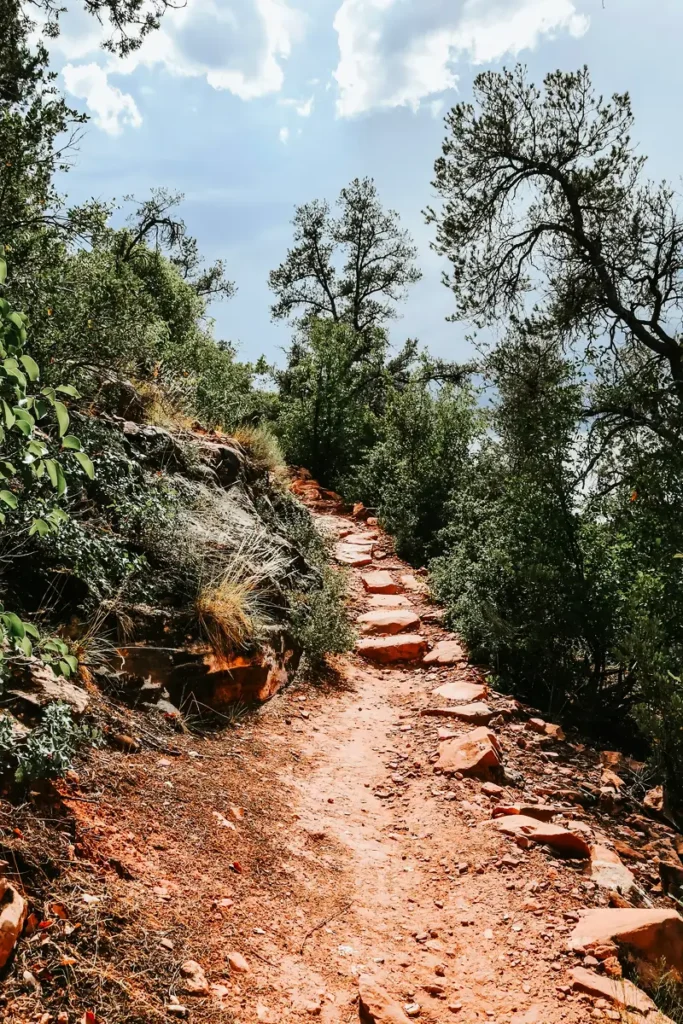
Trail Terrain Types
Hiking terrain greatly shapes your adventure, challenging your skills, endurance, and appreciation of nature’s diversity.
Rocky Trails
Filled with rocks of various sizes, rocky trails require mindful navigation but offer a rugged charm and often lead to breathtaking geological formations. Navigating a rocky trail in the Porcupine Mountains felt like solving a complex puzzle with every step.
Scree
Scree consists of small, loose rocks on slopes or at a mountain’s base. These slippery, challenging terrains demand careful foot placement and balance.
Talus
Talus fields, made of larger rocks scattered down slopes, require agility and keen attention. Hiking through talus can feel like playing a giant game of hopscotch.
Boulder Fields
Boulder fields consist of massive, irregularly shaped rocks, demanding strength and strategy. Crossing a boulder field in the Hiawatha National Forest turned every boulder into a unique challenge.
Hard-Packed Dirt Trails
Hard-packed dirt trails are clear and solid, providing a straightforward and popular hiking experience.
Bare Rock Trails
Vast expanses of bare rock require reliance on cairns or rock stacks for navigation, making mapping skills and trail markers essential.
Snowfield Trails
Blanketed in snow, these trails can hint at previous hikers or be entirely obscured, offering a pristine winter wonderland that demands careful navigation.
Desert Trails
Desert trails vary from sandy expanses to trails over slickrock—smooth, weathered sandstone. The diverse landscape of Arches National Park exemplifies these trails, where the scenery changes dramatically.
Types of Hiking
Hiking offers various experiences depending on your time, terrain, and preferences. Let’s explore the diverse world of hiking to find what suits your adventurous spirit best.
Day Hiking
Day hiking involves single-day trips, allowing you to explore nature without camping overnight. Its simplicity makes it accessible, perfect for impromptu adventures or introducing friends to hiking.
Backpacking
Backpacking combines hiking with wilderness camping, requiring self-sufficiency and careful planning. Carry everything you need in your backpack, allowing for a deep immersion in nature.
Thru-Hiking
Thru-hiking involves walking long-distance trails, like the Appalachian or Pacific Crest, from end to end over several months. It demands physical endurance and a mental commitment, offering a transformative journey.
Section Hiking
Section hiking lets you complete a long-distance trail in segments over an extended period. It makes mammoth trails more manageable, fitting hiking into your life without massive disruptions.
Urban Hiking
Urban hiking explores city landmarks, historical sites, and hidden gems on foot. It’s a great way to discover your city’s hidden beauty or explore unfamiliar urban environments.
Mountain Hiking
Mountain hiking offers relentless climbs, rugged terrain, and breathtaking panoramas. Physically demanding yet rewarding, summiting your first peak feels like a rite of passage.
Summit Hiking
Summit hiking focuses on reaching a peak. The goal offers panoramic views and a profound sense of accomplishment, like standing atop Mont Blanc.
Scrambling
Scrambling is a mix of hiking and climbing, using your hands to navigate steep, rocky terrain. It requires agility and climbing skills, offering a thrilling puzzle-like challenge.
Bushwhacking
Bushwhacking involves navigating untamed wilderness without established trails. It’s about overcoming natural obstacles using a compass, map, and good sense of direction.
Coastal Hiking
Coastal hiking explores stunning shorelines, from dramatic cliffs to serene beaches. It blends land and seascape adventures, offering unique beauty.
Winter Hiking
Winter hiking navigates through ice and snow, requiring winter gear for trekking through serene, snowy landscapes. It’s particularly beautiful but demands preparedness.
Night Hiking
Night hiking uses moonlight and starlight to reveal a different world. It offers cooler temperatures, quieter trails, and the thrill of navigating familiar paths in new ways.
Waterfall Hiking
Waterfall hiking leads to stunning cascades, rewarding with mesmerizing sights and sounds. It’s a photo op and nature’s symphony combined.
Desert Hiking
Desert hiking explores arid landscapes under the sun, taking you through sandy trails, unique rock formations, and wide-open desert spaces.
Eco-Hiking
Eco-hiking emphasizes conservation and minimal environmental impact. Hike with a purpose to respect, protect, and learn about natural resources, leaving no trace but footprints.
Final Thoughts
Each type of hiking offers a unique experience, catering to different tastes and adventure levels. Finding the right style transforms your hiking outings into memorable journeys. But in the end, experiencing a lot of different trails is the most fun!


